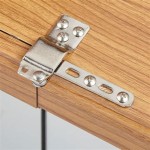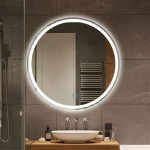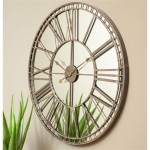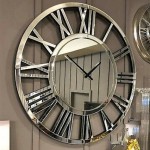How Do I Screen Mirror My iPhone to TV Without Wi-Fi?
Screen mirroring, the ability to wirelessly display the contents of an iPhone's screen on a larger display like a television, is a valuable tool for presentations, entertainment, and sharing content with others. While Wi-Fi is the most common method for screen mirroring, there are situations where a Wi-Fi network is unavailable or unreliable. This article explores various methods for mirroring an iPhone to a TV without relying on a Wi-Fi connection.
Using Wired Adapters
Wired adapters offer a reliable and stable connection for screen mirroring, eliminating the potential instability of wireless connections. Several adapter types facilitate this connection:
*Lightning Digital AV Adapter: This adapter connects directly to the iPhone's Lightning port and provides an HDMI output to connect to the TV. It supports mirroring of the iPhone's display, including apps, photos, and videos, up to 1080p HD.
*Lightning to VGA Adapter: For TVs or projectors with VGA inputs, this adapter provides a direct connection from the iPhone's Lightning port. It offers a reliable wired connection, but the resolution may be limited compared to HDMI.
*USB-C Digital AV Multiport Adapter (for iPad Pro with USB-C): For iPad Pro models with a USB-C port, this adapter provides HDMI output as well as other ports like USB and USB-C for charging. This allows users to mirror their iPad Pro's screen while also keeping it powered.
*Third-Party Adapters: Various third-party adapters offer similar functionality to Apple's official adapters, often at a lower price point. It’s essential to choose a reputable brand with positive reviews to ensure compatibility and performance.
Leveraging Bluetooth for Specific Content
While Bluetooth itself cannot mirror the entire iPhone screen, it can be used to stream specific types of content to compatible TVs:
*Audio Streaming: Most modern smart TVs support Bluetooth audio, allowing users to play music or podcasts from their iPhone directly on the TV's speakers. This is useful for listening to audio content without needing a wired connection or a Wi-Fi network.
*Limited Video Streaming (Some Smart TVs): Certain smart TVs might support limited video streaming over Bluetooth, although this is less common. The quality and functionality can vary significantly depending on the TV and the iPhone model.
Utilizing DLNA-Compatible Devices and Apps
DLNA (Digital Living Network Alliance) technology enables media sharing across compatible devices on a local network, even without an internet connection. This can be achieved using specific apps and hardware:
*DLNA-Enabled Apps: Several iOS apps facilitate streaming media content over DLNA to compatible TVs or media players. These apps act as a bridge, allowing users to select and play media from their iPhone on a DLNA-enabled device on the same local network.
*Media Servers: Setting up a media server on a computer or NAS device on the local network allows users to share media files with a DLNA-compatible TV. The iPhone can then access and play media from the server without Wi-Fi internet access.
Connecting to a Local Network Without Internet
Creating a local network without internet access can enable screen mirroring through some devices, circumventing the need for a Wi-Fi router connected to the internet:
*Travel Router Method: Portable travel routers can create a local Wi-Fi network without internet access. The iPhone and the streaming device (e.g., Apple TV, smart TV) can connect to this network, enabling screen mirroring as if they were on a standard Wi-Fi network.
*Direct Wi-Fi Connection (Some Smart TVs): Certain smart TVs offer the capability to create their own direct Wi-Fi hotspot, allowing devices like iPhones to connect directly. This creates a local network specifically for screen mirroring, eliminating the need for a separate router.
Hardwired Connection to TV via Adapters (Recap)
While previously mentioned, the reliability of hardwired connections bears repeating:
*Consistent Quality: Wired connections, especially HDMI, offer consistent video and audio quality, free from the signal fluctuations and interference that can affect wireless connections.
*Low Latency: Wired adapters typically have very low latency, which is crucial for activities like gaming or interactive presentations where immediate responsiveness is necessary.
*Simplicity: Plug-and-play functionality makes wired adapters incredibly easy to use, requiring minimal setup or configuration.
Choosing the Right Method
The optimal method for screen mirroring without Wi-Fi depends on the specific requirements of the situation:
*Content Type: For simply sharing photos or videos, a wired adapter or DLNA might suffice. For mirroring the entire screen, a wired adapter, travel router, or direct Wi-Fi connection to the TV would be necessary.
*TV Compatibility: The available input ports on the TV will dictate which adapter or connection method is feasible.
*Budget: Wired adapters range in price, and some solutions, like travel routers, require an initial investment.

Simple Ways To Mirror Iphone Tv Without Wifi 6 Steps

Simple Ways To Mirror Iphone Tv Without Wifi 6 Steps

Simple Ways To Mirror Iphone Tv Without Wifi 6 Steps

2024 Tutorial How To Mirror Phone Tv Without Wi Fi

4 Simple Ways To Mirror Phone Screen Without Wifi

How To Mirror Iphone Tv Without Wi Fi

How To Mirror Iphone Tv Without Wifi 3 Easy Methods Ps

How To Connect Phone Tv Without Wifi

4 Simple Ways To Mirror Phone Screen Without Wifi

3 Ways To Mirror Iphone Tv Without Apple Istreamer








